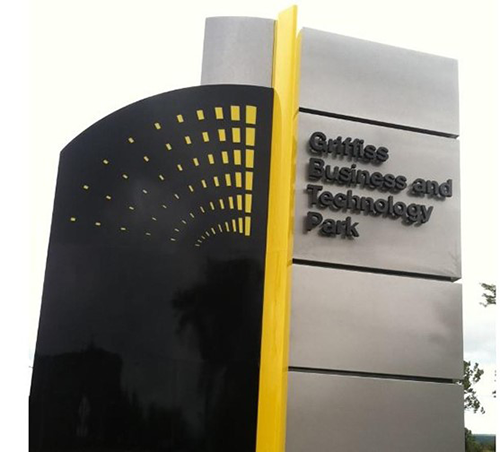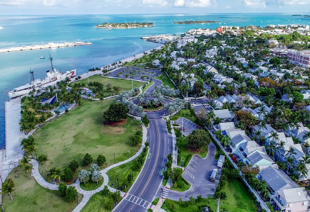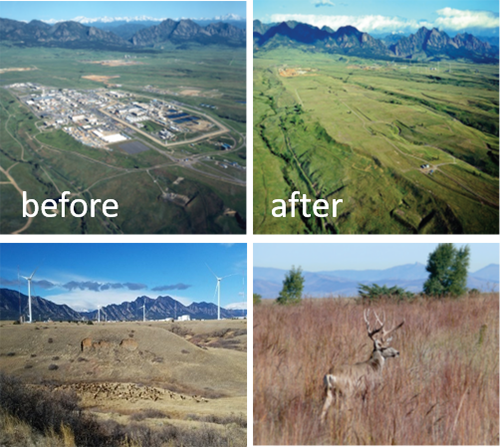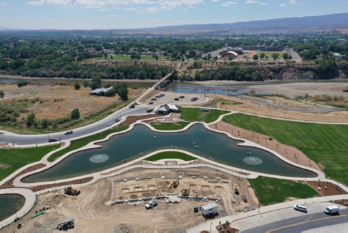2021 National Federal Facility Excellence in Site Reuse Awards
Awardees
EPA Announces the 2021 Federal Facility Excellence in Site Reuse Award Winners
EPA has announced the winners of the annual National Federal Facility Excellence in Site Reuse awards. These awards recognize the innovative thinking and cooperation among federal agencies, states, tribes, local partners and developers that have led to noteworthy restoration and reuse of federal facility sites.
"Our award winners are to be commended for the creative thinking, hard work, and cooperation that went into the impressive redevelopment projects we are recognizing today," said Barry N. Breen, Acting Assistant Administrator for EPA’s Office of Land and Emergency Management. "Their work clearly shows that addressing contaminated properties in a way that aligns with the needs of the surrounding community leads to win-win solutions for both the environment and the economy."
The Federal Facility Excellence in Site Reuse Awards cover four categories of federal facilities: (1) National Priorities List (NPL) sites, (2) NPL Base Realignment and Closure (BRAC) sites, (3) non-NPL BRAC sites, and (4) non-NPL sites. This year’s award winners are:
| Category | Awardee | Federal Agency | State |
|---|---|---|---|
| NPL BRAC | Former Griffiss AFB | Air Force | New York |
| Non-NPL BRAC | Naval Air Station Key West | Navy | Florida |
| NPL | Rocky Flats | Department of Energy | Colorado |
| Non-NPL | Las Colonias Park | Department of Energy | Colorado |
(1 of 6)

NPL BRAC Award: Former Griffiss Air Force Base, New York
The former Griffiss Air Force Base closed in 1995 due to Base Realignment and Closure (BRAC), resulting in the loss of 5,000 jobs or 30 percent of the city's economic base. With the closure came an exciting opportunity to repurpose the land for civilian uses. The partnership with the BRAC Cleanup Team, Griffiss Local Development Corporation, Mohawk Valley Economic Development Corporation, the State of New York, Oneida County, and the local community have made the reuse and restoration efforts a great success.
The former base, now known as Griffiss Business and Technology Park, has evolved into an economic hub for the region. Today, the park is home to Griffiss International Airport, numerous businesses, and serves as a base for the New York Air National Guard and the Air Force Research Laboratory. The former base is home to more than 72 tenants that employ nearly 6,000 people. The transformation of the 3,600-acre Griffiss Air Force Base into Griffiss Business and Technology Park is a model that will benefit future redevelopment projects.
Photo Credit: Air Force
(2 of 6)

Non-NPL BRAC Award: Former Naval Air Station Key West, Florida
Naval Air Station Key West was closed as part of the Base Realignment and Closure (BRAC) Act of 1990. The former base was redeveloped into the Truman Waterfront Park with a strong partnership between the City of Key West, the Navy, Naval Facilities Engineering Command, state regulators and the community. The Park includes an interactive water feature and playground for kids, turnaround and transit stops for public transportation, amphitheater, multipurpose field, dog park, a 50-foot-wide pedestrian promenade along the harbor and horse stables for the Key West mounted police.
In addition, the Poinciana Plaza Housing property, formerly used as Navy housing, offers low-income residential housing to the city. The transfer enabled the City’s Public Housing Authority to add 212 low-income, affordable housing units and 106 assisted living facility units to the area./p>
To date, the deed transfers and redevelopment of the Truman Waterfront Park have provided countless benefits to both visitors and the local community.
Photo Credit: DOE
(3 of 6)

NPL Award: Rocky Flats, Colorado
The U.S. Department of Energy (DOE) transformed a contaminated former nuclear weapon production plant into a conservation resource that provides recreational opportunities and enhances and protects critical habitat for a federally listed threatened species and several other rare plant and wildlife species.
The Rocky Flats Site was one of 13 nuclear weapons production facilities in the United States during the Cold War. From 1952 to 1989, the primary mission of the former Rocky Flats Plant was to process and machine plutonium and other materials into detonators. Although the plutonium, uranium and other hazardous substances posed a risk to humans and the environment, the urgency of the nuclear arms race placed a national priority on weapons production and testing. As a result, DOE faced one of the most significant and challenging nuclear weapons plant cleanups to date. After nuclear weapons components production ended, the facility’s mission changed to cleanup and closure where DOE completed an accelerated 10-year, $7 billion cleanup of chemical and radiological contamination. The accelerated cleanup returned the area back to its natural conditions benefiting both nature and the surrounding communities with recreational opportunities.
Today, the Rocky Flats National Wildlife Refuge provides access to 5,200 federally protected acres that are home to 239 migratory and resident wildlife species, including prairie falcon, mule and white-tailed deer, elk, coyotes, songbirds, hawks and the federally threatened Preble's meadow jumping mouse. One of the largest remaining globally rare ecosystem areas of xeric tallgrass prairie habitat is found on the refuge and more than 630 species of plants and a variety of wildflowers. Eleven miles of designated trails are available for wildlife viewing, photography and connecting with nature.
Photo Credit: Fish and Wildlife Service
(4 of 6)

Non-NPL Award: Las Colonias Park, Colorado
Las Colonias Park is the culmination of a collaborative vision shared by the U.S. Department of Energy, the City of Grand Junction, the community, and numerous other local organizations who envisioned the transformation of a former uranium processing facility into a beautiful city-owned park.
Las Colonias Park boasts a 15-acre business park, a 5,000-seat amphitheater, a river park, boat ramp, trails, ponds, natural area, and arboretum. A plaza with ample retail and restaurant space is under development.
Located just a half mile south of downtown, the new park provides a great destination for walking and biking alongside the Colorado River. The park is a catalyst for redevelopment in the surrounding lower downtown area with other development projects currently planned. Grand Junction is emerging as a regional tourist destination.
Photo Credit: DOE
(5 of 6)

Congratulations
Congratulations to all who played a role in making this reuse happen! This accomplishment is largely due to early engagement and teamwork that leads to a good site assessment and the appropriate environmental cleanup that achieved cleanup goals to support reuse. The award recognizes the hard work, innovative thinking, and cooperation among federal agencies, states, tribes, local partners, and developers to encourage restoration of federal sites for beneficial reuses. Cleaning up contaminated sites at federal facilities can serve as a catalyst for economic growth and community revitalization. These reuse successes will serve as a model that will benefit other reuse projects in the future.
(6 of 6)
